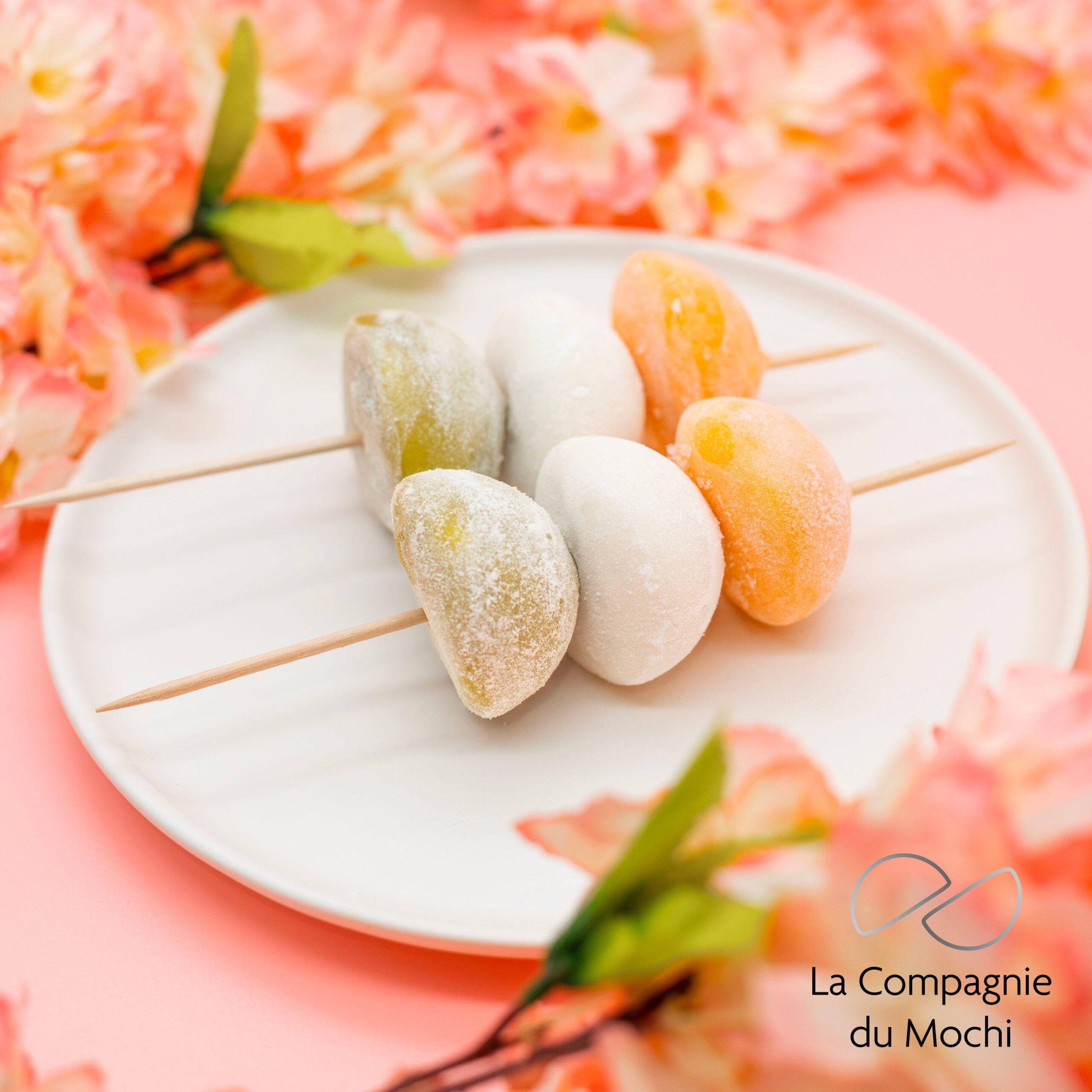
From traditional mochi to iced mochi
THE HISTORY OF MOCHI
The history of mochi dates back to Ancient Japan, where it was first made as a ritual food.
Rice, considered a gift of nature, is often found on special occasions in Japan, such as New Year's Eve or the Spring Equinox. Mochi was conceived with the aim of purifying and sanctifying rice, in the belief that it would bring fortune and health to those who ate it. Considered a sacred food at the time, it took part in various religious ceremonies.
Over time, mochi became increasingly popular, becoming a staple food in Japan, eaten for breakfast or as a snack. From that point on, mochi began to grow in popularity and to be revisited in a variety of ways: adding flavors and fillings, diversification, savory versions...
Thanks to its light taste, mochi blends easily with other flavors. Highly prized at tea ceremonies, mochi goes very well with pencha (green tea leaves) and matcha (powder).
MAKING MOCHI
A traditional food for centuries, mochi is made from glutinous rice with a sticky consistency. with a heart filled with red or white bean paste. It can be eaten plain, or with ingredients such as matcha, black sesame or yuzu.
The traditional method of making rice requires skill and experience, and is very labor-intensive. Indeed, once the glutinous rice has been steamed, it must be pounded with large wooden mallets in a large mortar called a "usu". While one person pounds the rice, another turns it over and adds water to keep it moist. Real teamwork and coordination!
You need to maintain your stamina to accelerate the pace until the rice forms a sufficiently elastic paste.
ICE CREAM, THE TRENDY HEART OF MOCHI
One culinary innovation has revolutionized the world of desserts, and that is of course iced mochi!
Quickly adopted in Japan and other Asian countries, iced mochi has become a staple of confectionery stalls and restaurant menus. The popularity of this delicacy has now crossed borders to conquer the taste buds of sweet tooths the world over!
An early version of iced mochi was produced by a Korean food company, Lotte Group, in 1981. The glutinous rice paste was replaced by rice starch, and the ice cream by rice pudding.
A decade later (1993), the modern version of iced mochi was created by Frances Hashimoto, former CEO of Mikawaya, an American confectioner. She was the first to enter the North American market with iced mochi.
It quickly became popular in the U.S. and then spread internationally, eventually appearing in seven different flavors.
The traditional mochi, rooted in Japanese culture, remains a symbol of tradition and celebration. The iced mochia true culinary innovation, has brought a modern, refreshing touch to this Japanese delicacy.
A true blend of cultural richness and contemporary creativity.
